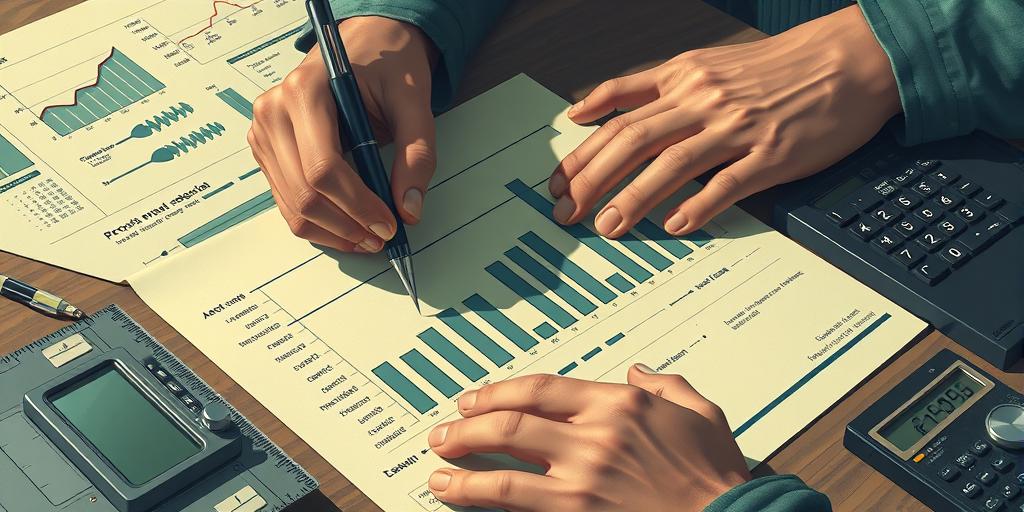Reflecting on the Era Before Data Visualization Tools
Step back in time with us as we explore the era before the advent of data visualization tools. Imagine a world where deciphering complex datasets meant wading through endless spreadsheets and wrestling with raw numbers—a world before the illuminating power of charts and graphs transformed data analysis. This journey into the past will illuminate not just how far we’ve come, but also highlight the ingenuity and perseverance required to make sense of data in the pre-visualization age. Prepare to be amazed by the sheer determination and creativity of data analysts of yesteryear!
The Challenges of Pre-Visualization Data Analysis
Before the digital revolution, the methods for interpreting complex information were significantly more laborious. Consider the sheer manual effort involved in generating even a simple bar chart – it wasn’t a matter of a few clicks; it was an exercise in precision and patience involving precise measurements, careful plotting, and painstaking hand-drawing. This task was made even more difficult with the sheer volume of data, often involving countless paper records and ledgers. Data analysts had to rely heavily on meticulous manual calculation, statistical techniques, and an innate ability to synthesize information from sometimes disparate sources. This required a profound understanding of statistics and the ability to translate raw numbers into meaningful narratives, often using rudimentary tools like calculators and slide rules. Understanding the nuances of statistical significance, probability distributions, and regression analysis was absolutely critical for uncovering trends and making informed decisions. The time commitment alone for such analyses often stretched out for days, even weeks. Furthermore, sharing findings with colleagues or clients was a much slower process, often reliant on creating extensive written reports or presentations with carefully drawn charts and graphs.
The Limitations of Early Methods
The challenges associated with pre-visualization techniques weren’t merely about labor-intensity; the very nature of the methods placed limits on the depth and breadth of analysis. Without the visual aids that modern tools offer, patterns and relationships that are now easily visible could often be overlooked or remain obscured. Imagine a scenario where a business owner needed to assess sales trends, with only massive printouts of financial statements at their disposal. Detecting subtle shifts in customer preference or identifying seasonal variations would have been incredibly taxing.
The Rise of Early Data Visualization Techniques
While fully-fledged digital data visualization tools were absent, early forms of visualization existed, albeit rudimentary. Pioneering researchers and statisticians employed innovative approaches, such as hand-drawn charts and meticulously crafted tables, to illustrate their findings. These early visualizations, though primitive by today’s standards, served a crucial role in transforming raw data into more accessible and comprehensible formats. Early mechanical calculators played a role, providing speed and efficiency in the arithmetic processing of data. These were a significant upgrade over using only slide rules and by-hand calculations, representing a small stepping stone toward faster data analysis and processing.
The Impact of Early Visualization on Decision Making
Despite their limitations, these early visualization methods had a discernible influence on decision making. By making complex data patterns more accessible, even in their rudimentary form, these approaches allowed for better identification of trends, enhanced decision-making, and helped establish a more fact-based approach to policy and strategy. This underscores the inherent human propensity to make better decisions when presented with easily-understandable visual representations of data. Think about the powerful impact of a well-constructed pie chart compared to the raw percentage data it represents – the visualization brings the information to life.
The Evolution Towards Modern Data Visualization
The journey from hand-drawn charts to sophisticated interactive dashboards is a testament to human ingenuity. The transition was gradual, driven by advancements in computing power, innovative software development, and evolving user needs. The development of mainframe computers and subsequent personal computers played a pivotal role in the genesis of digital tools for data visualization. The early software packages were often less intuitive but gradually progressed towards more user-friendly applications, capable of handling increasingly large and complex datasets.
The Modern Landscape of Data Visualization
Today, we have an array of powerful tools that not only visualize data but also offer interactive exploration, advanced statistical modeling, and seamless data integration. From simple bar charts to intricate network graphs, modern tools cater to all sorts of users, regardless of their technical prowess. They empower researchers, businesses, and policymakers to uncover insights, communicate their findings, and make well-informed decisions.
The transformation from arduous manual calculations to intuitive, interactive dashboards marks an incredible leap forward. This evolution is ongoing, with new tools and techniques emerging to address the ever-increasing complexity of data in our increasingly digital world.
Embrace the power of data visualization. Start exploring the limitless potential of turning raw data into actionable insights!













